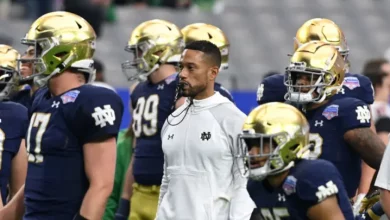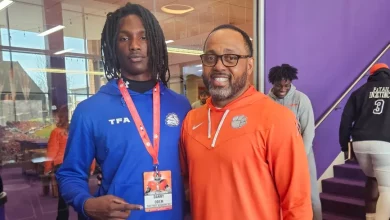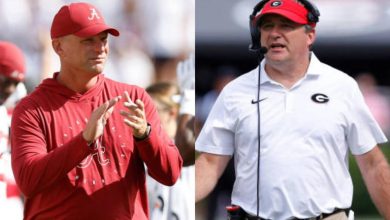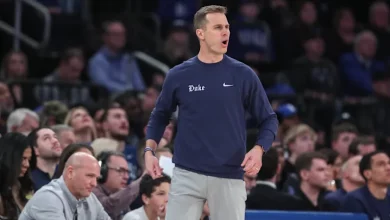Dabo Swinney’s weakest position groups for Clemson football: Who replaces Phil Mafah in 2025?
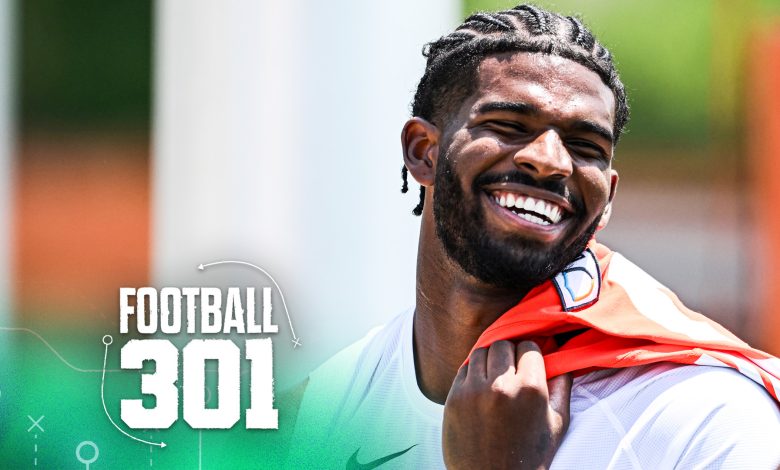
As Clemson football prepares for the 2025 season, all eyes are once again on Dabo Swinney — and not just because of College Football Playoff expectations or quarterback Cade Klubnik’s Heisman buzz. The Tigers enter a pivotal year with championship ambitions but face serious question marks in several position groups. At the center of concern: Clemson’s running back room, which must now replace its most reliable weapon from the past two seasons — Phil Mafah.
Mafah’s departure to the NFL leaves a power vacuum in the Clemson backfield. With no proven workhorse on the roster and lingering injury issues, running back may now be the weakest position group on the team — and it could shape how far the Tigers go in 2025.
Phil Mafah’s Impact and Exit
Phil Mafah might not have been the flashiest player in Clemson’s offense, but he was the most consistent. In 2024, Mafah led the Tigers with over 1,200 rushing yards and 12 touchdowns, shouldering a heavy load after Will Shipley’s early NFL declaration. Mafah was the kind of bruising, downhill runner who thrived in the red zone and on third-and-short — the perfect counterbalance to Klubnik’s finesse and tempo-based passing game.
But now he’s gone. Declaring for the 2025 NFL Draft and subsequently selected in the mid-rounds, Mafah left behind a void that remains glaringly unfilled. More than just production, Clemson loses experience, physicality, and reliability. So who steps in?
The Running Back Depth Chart: Thin and Unproven
Swinney now faces one of the toughest personnel puzzles of his tenure. Let’s break down the candidates vying to replace Mafah and assess why this room is the weakest on the roster entering fall camp.
1. Jay Haynes – Injured Potential
Sophomore Jay Haynes was penciled in as Mafah’s successor early in 2024, drawing praise for his speed and vision in limited reps. However, a torn ACL in the ACC Championship derailed his rise. Though expected to return sometime in 2025, betting on Haynes to carry the load early — or at all — is risky.
Haynes is a shifty, explosive back, but his durability and ability to take on 20+ touches a game remain in question. At best, he could be eased in by midseason; at worst, he’s a redshirt.
2. David Eziomume – The Redshirt Freshman
Eziomume has the build (6’0″, 210 lbs) and raw talent to be a between-the-tackles runner, and he flashed in limited action during 2024. Coaches like his work ethic, but he’s still learning the offense and struggled with pass protection in the spring.
If he can improve his vision and handle blitz pickups, Eziomume might emerge as the primary ball carrier. But that’s a big “if” for a player with just 10 collegiate carries to his name.
3. Gideon Davidson – The Freshman Sensation
The most talked-about newcomer on campus, Davidson brings elite pedigree. Ranked as a top-100 national recruit and the No. 2 all-purpose back in the 2025 class, he’s fast, powerful, and versatile.
Still, throwing a true freshman into a feature role is a tall order in the ACC. Davidson could earn third-down snaps early and eventually split carries, but asking him to replicate Mafah’s production as a rookie would be unfair — and likely unrealistic.
4. Keith Adams Jr. & Jarvis Green – Veterans Without Breakout Games
These two returning juniors bring experience — and not much else. Adams Jr. has career totals of 122 rushing yards, while Green sits at 53. Neither has shown consistent explosiveness or the ability to make defenders miss. They’ll compete for backup roles but are unlikely to be more than situational runners unless someone has a major leap in camp.
5. Adam Randall – The X-Factor
Perhaps the most intriguing wrinkle in the backfield is the emergence of wide receiver-turned-running back Adam Randall. At 6’2″, 220 lbs, Randall has the frame to withstand contact and surprised many with his 44 rushing yards in a playoff game last season. He could bring a Deebo Samuel-like hybrid role, though it’s unclear whether his transition to full-time running back is permanent or experimental.
What Makes This Clemson’s Weakest Group?
Every elite team has at least one position unit in flux. For Clemson, it’s not the defensive line, secondary, or quarterback — it’s the backfield, and here’s why:
- Lack of Experience: Outside of Adams and Green, no returning back has significant game reps. And even they haven’t produced at a high level.
- Health Concerns: Haynes’ recovery clouds the entire group’s outlook. Without him, the Tigers are relying on two first- or second-year players.
- Pass Protection Issues: Mafah excelled at picking up blitzes — something Clemson’s young backs struggled with in the spring. With Klubnik expected to pass more in 2025, protection matters.
- No Clear #1 Option: There’s no guaranteed 15-carry-per-game back. That puts the onus on Swinney and OC Garrett Riley to either piece together a committee or rework the playbook.
Potential Solutions: What Can Swinney Do?
1. Running Back by Committee
The most likely short-term solution is a full-on committee approach. Expect Riley to rotate Eziomume, Davidson, and maybe a healthy Haynes into the mix. While this reduces the risk of injury and keeps legs fresh, it often results in inconsistent rhythm and mismatched game plans.
2. More Klubnik Runs
With the backfield in question, Klubnik’s legs may become a more prominent part of the offense. Don’t be surprised if the Tigers incorporate more designed quarterback runs, RPOs, and zone reads to compensate.
3. Transfer Portal (Too Late?)
Clemson’s reluctance to fully embrace the transfer portal could come back to bite here. While Swinney has brought in talent at other positions, the Tigers passed on experienced running backs during the offseason. Unless a late-summer transfer is added, they’ll ride with what they have.
Broader Impacts on the Offense
The uncertainty at running back could force Clemson to evolve its identity. Over the last decade, Clemson has leaned heavily on a power run game to open up play-action. In 2025, the team may reverse that — using short passes, motion, and spacing to “run through the air.”
Cade Klubnik’s Role
This is now clearly Klubnik’s team. His decision-making, mobility, and comfort in the tempo offense will be critical in masking the backfield deficiencies. Expect Clemson to rely more heavily on screens, quick slants, and swing passes to simulate the run game.
Wide Receivers & Tight Ends
With receivers like Tyler Brown and Noble Johnson returning, plus tight end Jake Briningstool playing a major role in the red zone, the Tigers may spread defenses out and reduce their dependence on inside zone runs.
What Success Looks Like in 2025
If Clemson makes another playoff run, it will likely be because one of three things happens:
- A back (likely Eziomume or Davidson) emerges as a consistent force by midseason and carries the load.
- The offensive line improves dramatically, giving the committee enough room to operate efficiently.
- The Tigers fully evolve into a pass-first offense, with Klubnik elevating his game to cover for the lack of a star running back.
Dabo Swinney is no stranger to roster turnover, but the running back situation in 2025 presents a rare moment of genuine uncertainty in an otherwise loaded team. Without Phil Mafah, Clemson’s offense will look different — and possibly unrecognizable compared to years past.
The challenge now lies in adaptation. If Clemson can creatively deploy its young backs, trust its quarterback, and lean into flexibility, it may not miss a beat. But if the Tigers cling to an outdated power run identity with unproven backs, it could cost them in big moments.
Replacing Phil Mafah isn’t just about filling a stat sheet — it’s about rethinking the foundation of the offense.



